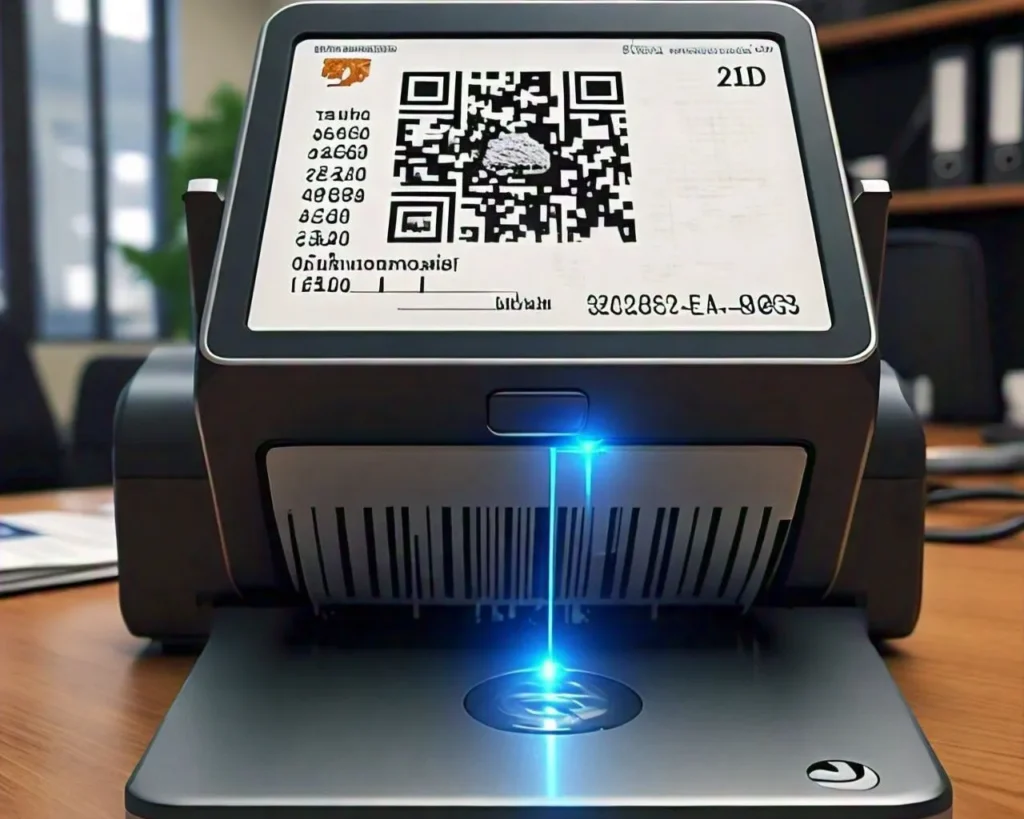The Role of Barcodes in Document Scanning and Identity Verification
In today’s fast-paced digital world, efficient and secure methods of handling information are paramount. One such method that has proven to be both effective and reliable is barcode reading. This technology has evolved significantly, finding applications in various sectors, including document scanning and identity verification.
This article delves into the essentials of barcode reading software, its applications in document scanning, the latest trends in its use for identity verification, and the mechanics behind barcode scanning software.
What is Barcode Reading?

Barcode reading is the process of using optical scanners to interpret and decode the information encoded within barcodes. Barcodes are graphical representations of data that are typically composed of black and white lines of varying widths or patterns. These codes can store a wide range of information, from product details and inventory numbers to complex data used in identity verification.
Barcodes are classified into two main types:
- 1D Barcodes: Also known as linear barcodes, these are the traditional barcodes consisting of parallel lines and spaces of varying widths. They are used extensively in retail for tracking products.
- 2D Barcodes: These include QR codes and Data Matrix codes, which can store more information than 1D barcodes. They use patterns of squares, dots, and other shapes.
Why Use Barcodes in Document Scanning?
The use of barcodes in document scanning offers numerous benefits that enhance efficiency, accuracy, and security in data management:
1. Improved Efficiency:
Barcodes streamline the document scanning process by allowing quick and accurate data entry. This reduces the time and effort required to manually input information.
2. Enhanced Accuracy:
Human error is significantly reduced when using barcode reading software for data capture. Scanners accurately read and record data, minimizing mistakes.
3. Cost-Effective:
Implementing barcode systems is relatively inexpensive compared to other data management solutions. This makes it accessible for businesses of all sizes.
4. Increased Security:
Barcodes can be encrypted and made tamper-proof, adding a layer of security to sensitive documents and information.
5. Versatility:
Barcodes can be used in various types of documents, including invoices, shipping labels, and identity documents, making them highly versatile.
The Latest Trends in Using Barcodes for Identity Verification
As technology advances, so do the applications of barcodes in identity verification. Here are some of the latest trends:
1. Integration with Mobile Technology:
Smartphones equipped with high-resolution cameras are now capable of reading barcodes. This integration allows for seamless identity verification on the go, enhancing user convenience.
2. Blockchain-Based Identity Verification:
Combining barcodes with blockchain technology provides a secure and immutable method of verifying identities. Barcodes can store encrypted data linked to blockchain records, ensuring data integrity and security.
3. Multi-Factor Authentication (MFA):
Barcodes are being used as part of MFA systems. Scanning a barcode can serve as an additional verification step, increasing the security of the authentication process.
4. AI and Machine Learning:
Artificial intelligence and machine learning algorithms are being used to enhance the accuracy and speed of barcode reading and decoding. These technologies can also help detect and prevent fraud.
How Barcode Scanning Software Works in Identity Verification
Barcode scanning software is designed to accurately read, decode, and parse barcode data for various applications, including identity verification. Here’s how it works:
Barcode Detection
The first step in barcode scanning is detection. The software uses image processing techniques to locate the barcode within the scanned document or image. This involves identifying the distinct patterns and shapes that constitute the barcode.
Barcode Reading and Decoding
Once the barcode is detected, the software reads and decodes the information encoded within it. For 1D barcodes, this involves interpreting the varying widths of the lines and spaces. For 2D barcodes, the software deciphers the patterns of squares, dots, or other shapes to extract the data.
Check Out: Money6x Real Estate: A Comprehensive Guide to Real Estate Investment
Barcode Data Parsing
After decoding the barcode, the extracted data is parsed and formatted according to the application’s requirements. This data can then be used for various purposes, such as verifying a person’s identity, tracking a product, or managing inventory.
Conclusion
Barcodes have revolutionized the way we manage and verify information. From improving efficiency and accuracy in document scanning to enhancing security in identity verification, the applications of barcodes are vast and varied. As technology continues to evolve, we can expect to see even more innovative uses for barcode reading in various industries. Embracing these advancements will undoubtedly lead to more secure and efficient ways of handling information in our increasingly digital world.
